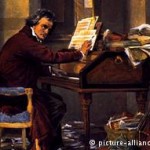三歲小孩或許連筆都未必拿得穩,如何拿弓拉奏小提琴?國際知名的日籍小提琴家西崎崇子說:「有何不可?只要父母肯和孩子一起投入學習,四歲已可拉奏巴哈名曲。」
憑梁祝小提琴協奏曲揚名國際的小提琴家西崎崇子,同樣也是一名母親,對於如何讓孩子認識音樂、愛上音樂,自有一番獨門心得,秘訣在於:父母和孩子齊齊學音樂!
與音樂一同成長
如何讓孩子愛上音樂?這裡說的,是讓孩子喜愛音樂的竅門,並非讓孩子成為音樂家的捷徑。西崎小姐教路,這就必須讓BB「與音樂一起成長」,越早開始越好,讓他從小習慣將音樂融入生活。這很關乎父母的參與,多在家中播放不同種類的音樂給BB聽,如能同時向BB說明演奏的樂器效果更好,例如「這是喇叭聲,非常響亮」、「這種舒適的聲音是笛子呢」,與BB一起細聽美妙旋律,是很好的親子活動。
父母也能做音樂教師
長居本港的西崎小姐,擁有一間小提琴教室,專為兩歲半以上幼兒而設的小提琴班,開宗明義需要父母與孩子一起上堂,在收學生前,也必先和孩子的父母面試,確保其中一位家長能與孩子一起學習。為何有此規定?原因是父母需肩負起家庭音樂老師的重任。幼童的集中力非常短,在堂上未必能耐心聽指示,故在教導孩子的同時也教導父母,下課後家長就可在家幫助孩子正確練習了,孩子和自己學到音樂,同時增加親子交流,可謂「一石三鳥」。西崎小姐補充,即使父母對音樂全無認識也不要緊,大可以和孩子一起由零開始。
正面支持鼓勵孩子
單單責罵是不能教好孩子的,經常鼓勵、給小禮物讚賞他的努力來得更有效。西崎小姐說,在學音樂的過程中,必會遇到困難想放棄的時候,父母可在旁鼓勵孩子,例如練成某一段樂章,就有小貼紙做獎品,這方法出奇地有效。總之,家長應給予正面的支持,而非先失耐性發脾氣,但當然在適當時也要給予適量的逼迫。
學音樂=學禮貌
因多年學習音樂的關係,或許也與日本人的傳統習性有關,西崎小姐優雅的舉止、彬彬有禮的態度令人印象深刻。對於年幼的學生,她會嚴格要求小朋友遵從禮儀規矩,學生在上課前後必須九十度鞠躬三秒向導師問好,也教孩子在與人溝通時,必須要有眼神接觸才算有禮貌。她自言,這能改善很多「大少爺」、「小公主」的野蠻態度。
西崎小姐的兒子已長大成人,她強調打從兒子出世開始,就沒有讓孩子成為音樂家的念頭。縱使如此,兒子也拉得一手優秀的小提琴,這與父母都是音樂發燒友有莫大關係,家裡一天到晚都充滿著美妙的旋律。不過兒子到中學時,被朋友笑他拉小提琴很「乸型」,所以轉而去學結他這種他認為更有「男子氣慨」的樂器。
「但我一點也不感到失望,畢竟他已學懂欣賞音樂。只要是兒子喜歡的,就由他去做吧!」有這樣開明自由的母親,她的兒子必定非常幸福。
最先應學小提琴
三、四歲幼童是開始學習樂器的最合適時期。西崎小姐建議各位媽咪,如非孩子有指定想學的樂器,可由難度最高的樂器──小提琴學起,因小提琴比鋼琴等其他樂器更能訓練聽覺、集中力、協調能力。學懂小提琴,將來學習其他樂器便更易上手,即使孩子手指不算長也沒有大問題。
「和音樂一同成長的孩子,事情會做得比其他人好,生活也會更美好;練習音樂鍛煉得來永不放棄的性格,是成大器必備條件。」
自《Babynews親子雜誌》(20/5/2011)

















